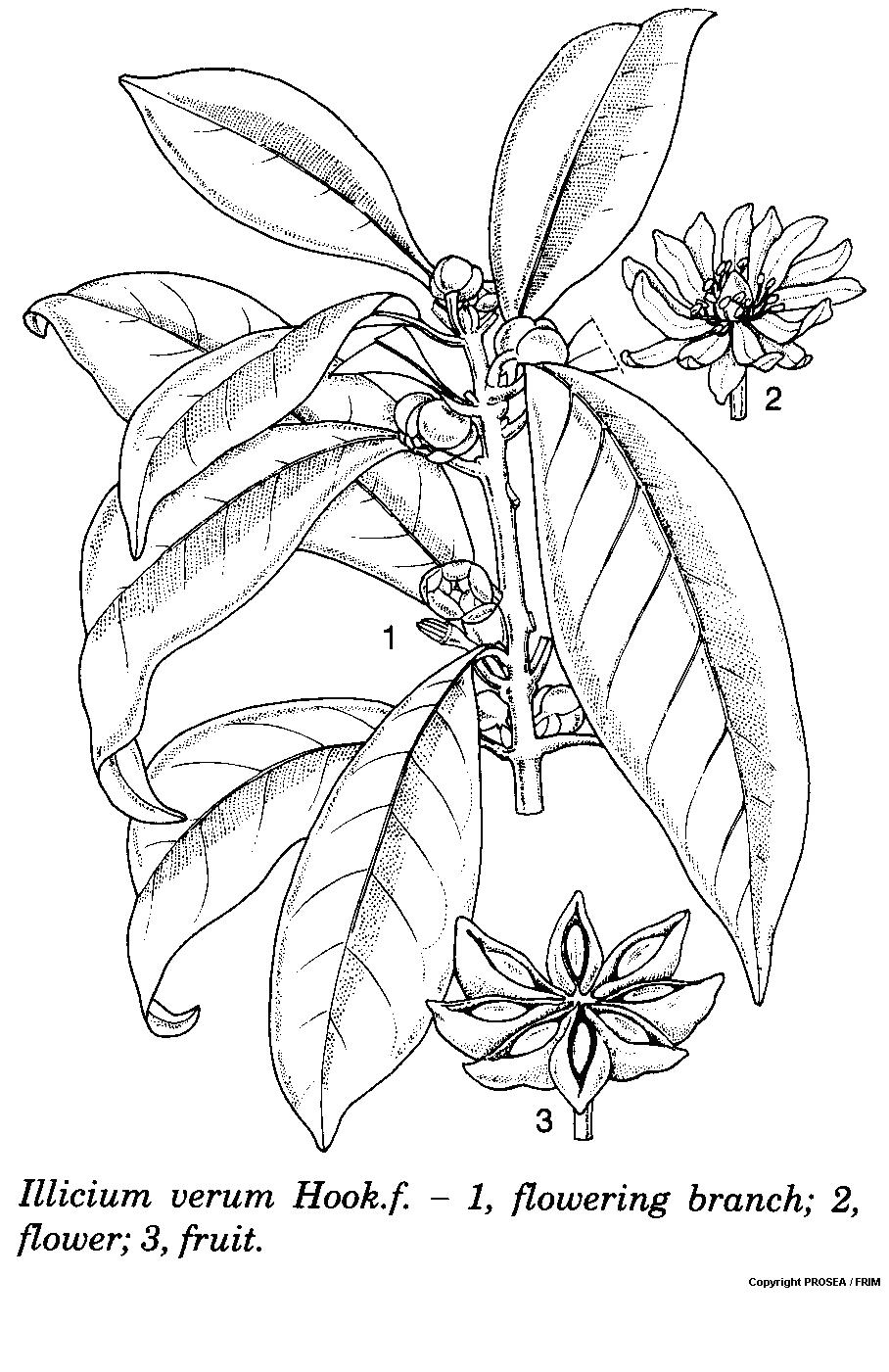Illicium verum Hook.f.
Family
Illiciaceae
Synonyms
Illicium anisatum Lour. non L., Badianifera officinarum Kuntze.
Vernacular Names
| Malaysia | Bunga lawang, adas china. |
| English |
Chinese star anise, star anise. |
| Indonesia | Bunga lawang (General), adas cina (General), pe ka (derived from Chinese). |
| Thailand | Chinpaetklip, poikak. |
| Philippines | Sanque, sangke (Tagalog, Cebuano). |
| Cambodia | Phka chann, pôch kak lavhav. |
| Vietnam | H[oof]i, hoi sao, b[as]t gi[as]c h[uw][ow]ng. |
| French | Badianier, anis étoilé, anis de Chine. |
Geographical Distributions
Illicium verum is only known from cultivation although sometimes occurs in semi-wild populations of abandoned plantations. It most probably originated from south-eastern China (Guangxi, Guangdong, Fujian, Guizhou and Yunnan) and northern Indo-China (Laos, Vietnam), where it has been used as a spice and medicine for over 3000 years. It is also cultivated in Hainan, Taiwan and Japan. Cultivation in other parts of the world seems difficult. In Europe, Illicium verum is believed to originate from the Philippines because in 1578 the navigator Thomas Cavendish brought the first fruits, originating from southern China, to Europa via the Philippines.
Description
Illicium verum is an evergreen tree which can grow up to 8-15(-20) m tall. Its trunk diametre at breast height measures up to 25 cm and its bark is white.
The leaves are arranged alternately, simple, coriaceous and with dotted glands. The petiole is about 1 cm long. The blade is elliptical to obovate or lance-shaped, measuring 5-15 cm x 1.5-5 cm, with entire margin, and acute at apex while pubescent at the lower side.
The flowers are axillary, solitary, bisexual, regular, measuring 1-1.5 cm in diametre, and white-pink to red or greenish-yellow. The pedicel is 0.5-1 cm long. There are 7-12 perianth lobes that are arranged spirally. There are 11-20 stamens that are arranged spirally with short and thick filaments. There are usually 8 carpels which are free and arranged in a single whorl.
The fruit is a capsule-like follicetum, measuring 2.5-4.5 cm in diametre and consists of an agregate of (5-)8(-13) follicles which are arranged around a central axis in the shape of a star (hence the name star anise). Each follicle is boat-shaped, 1-2 cm long, rough, rigid, reddish-brown, contains 1 seed and splits along the ventral edge when ripens. The smooth and glossy seed is subcylindrical to compressed ovoid, measuring 8-9 mm x 6 mm, light brown, containing copious and oily endosperm.
Ecology / Cultivation
The ecological requirements of Illicium verum are not well-known. Its main cultivation areas lie in the cooler tropics and subtropics at altitudes up to 2000 m, with average annual temperatures of 12-18°C, average annual precipitation of 1000-2000 mm and with soils with a pH of about 5.8.
Line Drawing / Photograph

Read More
References
Plant Resources of South-East Asia No. 13: Spices.


